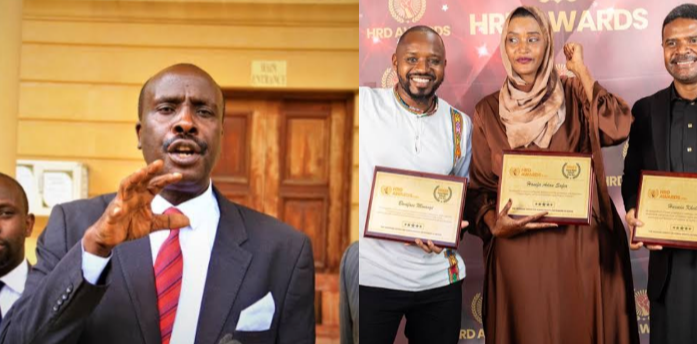By Musa Maridhawa
The stage is set and the cameras primed. As tomorrow, Wednesday, June 25th 2025, dawns, a familiar cast prepares for its grand entrance onto a tumultuous street theatre. Promises of fiery defiance fill the air, amplified by social media megaphones wielded by certain self-appointed guardian angels of the people.
Yet, as lawyer Danstan Omari rightly claims, Kenya’s “civil society” is a hopeless troupe of commercial activists, performing outrage for foreign lenses, while abandoning the very youth they propel into danger when the real cost of their theatre comes due, more so in courts of law.
Omari’s assertion strikes at a festering hypocrisy. He contends that our civil society activist organisations are driven not by a deep-seated commitment to justice or the welfare of vulnerable Kenyans, but by a cynical calculus. Their primary audience isn’t the ordinary Kenyan they seek to call to fury but some shadowy grant officers in distant Western capitals. Their currency of engagement is the gory image, the dramatic footage, and the animated report of “state brutality or popular uprising.” All these references are digital trophies meticulously curated to justify the phony activists next funding tranche.
Tomorrow’s planned protests offer the perfect backdrop for this lucrative performance art. Expect carefully staged confrontations, emotive sound bites delivered inches from police lines, and a flurry of social media posts dripping with manufactured fury – all designed to capture the attention and, crucially, the dollars of their foreign paymasters.
The most damning part of Omari’s indictment, however, lies in the aftermath. When the tear gas clears, the stones lie scattered, and the inevitable legal consequences descend upon the young, impassioned Kenyans who heeded the activists’ call to the barricades, the scene shifts dramatically. The vibrant, defiant leaders who stoked the flames vanish. The courtrooms, where the harsh realities of charges, bail applications, and legal defence unfold, are conspicuously absent of the NGO-branded suits and eloquent spokespersons who dominated the headlines just days before.
The youth, often naive, idealistic, and bearing the brunt of the physical and legal risks, find themselves alone. They face the machinery of the state with little more than overburdened legal aid or family support, while the architects of their peril retreat to the comfort of their offices or homes, basking in the warm glow of their perceived moral superiority and the international acclaim garnered by their carefully edited footage.
These commercial activists are masters of incitement disguised as advocacy. They, more often than not exhale “fake fire and brimstone,” as Omari aptly puts it to please some inscrutable saboteur in distant places. They employ apocalyptic rhetoric, painting complex situations in stark binaries of good versus evil, urging drastic action while remaining insulated from its fallout.
Commercial activists expertly exploit genuine grievances while offering no viable solutions beyond the catharsis of confrontation. Their role is purely catalytic. They ignite the tinderbox of youthful exuberance, capture predictable explosions on camera, and then distance themselves from the scorched earth and shattered lives left behind. They are the arsonists who refuse to own the blaze.
The bitter irony of commercial activists is profound. They are active enablers of harm. They manipulate the very people they claim to champion, turning them into expendable extras in their fundraising drama. The young Kenyan propelled into a violent confrontation, risking life, limb, and liberty, is not a partner in struggle. Rather they are raw material, a statistic in a grant proposal, a pixel in damning photo montages emailed to Geneva or Washington. The activists derive prestige, influence, and financial reward from this dynamic, while the youth bear physical and psychological scars.
Think about it; Omari’s call out is not an attack on legitimate activism. It is a vital demand for discernment and accountability. Kenyans must learn to distinguish between genuine advocates of society’s greater good and commercial-driven activism.
As the familiar street theatrics unfold tomorrow, Kenyans must watch with open eyes and see who rushes to document the “gory” aftermath for foreign consumption.
It is time to reject the self-serving performance of commercial activists and demand that those who claim to speak for the people actually stand with the people, especially when the cameras stop rolling and the gavel falls.
Kenya’s youth deserve mentors and defenders, not manipulative directors who profit from their peril. Let Omari’s words be a clarion call that exposes the charade staged by a camera-hungry chorus accountable for the dangerous scripts they write and abandon.
Maridhawa is a Kilifi-based ethnographer



